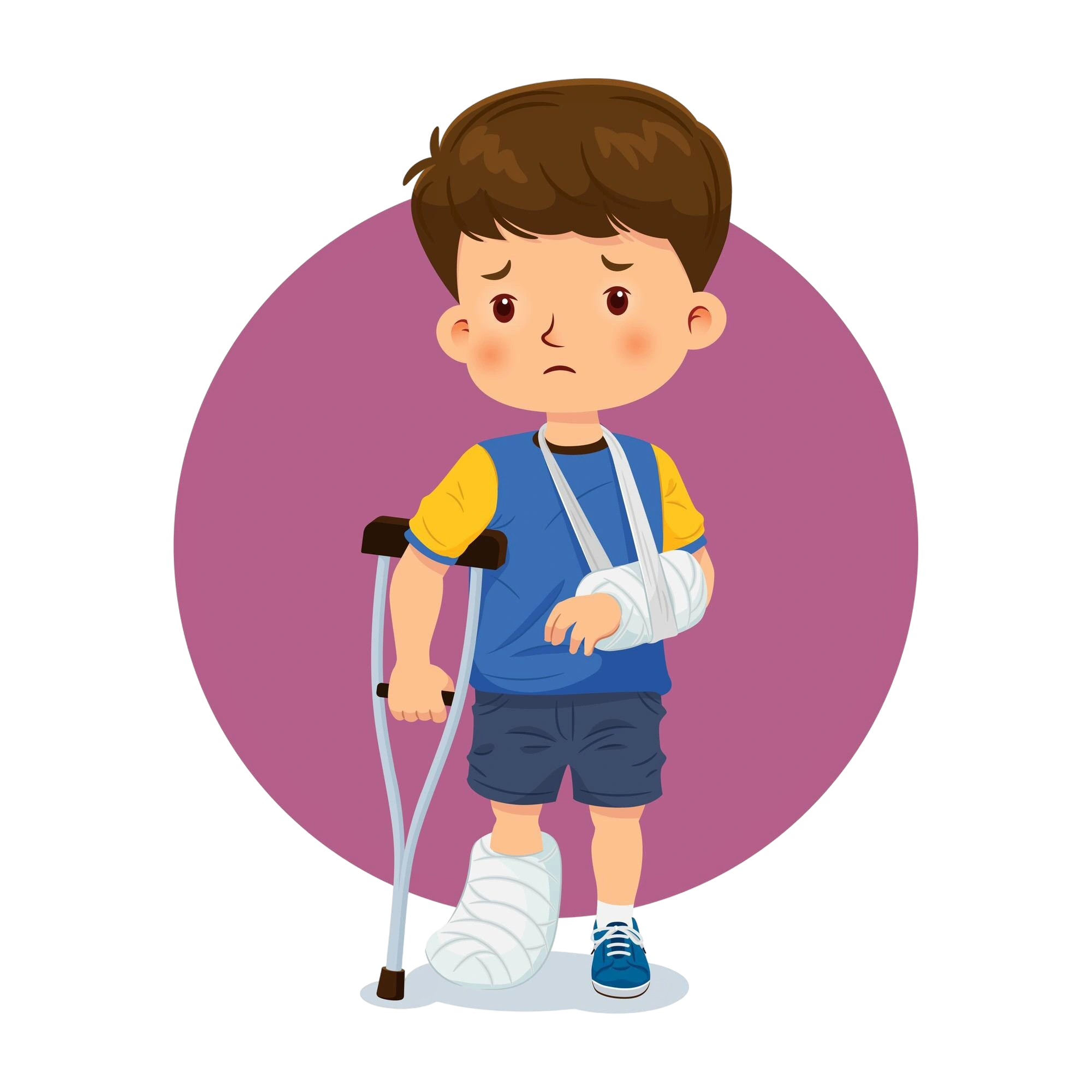Fractures are among the most common orthopedic injuries in children — but not all fractures are the same. A child’s bones are softer, more flexible, and heal differently from those of adults. As a pediatric orthopedic surgeon, I often explain to parents that timely and appropriate fracture management in children ensures proper healing, minimizes complications, and preserves long-term growth and function.
Here’s a detailed overview of the types of fractures in children, stages of healing, and what certain signs and symptoms might indicate.
1. Why Are Children More Prone to Fractures?
- Children’s bones are still growing. The presence of growth plates (physes) — soft cartilage at the ends of long bones — makes them more susceptible to injury. Common causes include:
- Falls while playing or cycling
- Sports injuries
- Accidents or direct trauma
- Vitamin D or calcium deficiency (weakened bones)
While most fractures in children heal well, misdiagnosis or improper treatment can affect bone growth and alignment permanently.

2. Common Types of Fractures in Children
✅ Greenstick Fracture
- Bone bends and cracks on one side, without breaking completely.
- Common in younger children due to flexible bones.
✅ Torus (Buckle) Fracture
- A compression-type fracture caused by force along the bone’s length.
- Stable and usually heals with minimal immobilization.
✅ Complete Fracture
- The bone breaks completely into two or more parts.
- Requires proper reduction and immobilization.
✅ Growth Plate (Physeal) Fracture
- Involves the developing growth plate near the bone ends.
- Needs expert pediatric orthopedic attention, as growth can be affected if not treated correctly.
✅ Comminuted or Displaced Fracture
- The bone shatters into multiple fragments or moves out of alignment.
- May require surgical fixation using wires or plates.
✅ Pathological Fracture
Occurs due to underlying bone weakness (infection, tumor, or metabolic disorder).
3. Stages of Bone Healing in Children
Understanding the healing process helps parents stay patient during recovery.
- Inflammation Stage (0–7 days):
- Bleeding and swelling occur around the fracture.
- The body begins forming a soft blood clot (hematoma).
- Reparative Stage (1–3 weeks):
- The body forms a soft callus of cartilage and tissue around the fracture.
- Hard Callus Stage (3–8 weeks):
- Soft callus hardens into new bone.
- This stage determines alignment and strength.
- Remodeling Stage (up to 1 year):
- Bone reshapes itself to restore normal structure and strength.
- Children’s bones remodel better than adults’, leading to excellent recovery.
4. Warning Signs Parents Should Not Ignore
If your child experiences any of these symptoms, seek orthopedic consultation immediately:
- Visible swelling, deformity, or bruising
- Inability to move the limb or bear weight
- Persistent pain after a fall
- Numbness or pale skin near the injury site
Ignoring early symptoms may lead to malunion (improper healing) or growth disturbances.
5. How Pediatric Fractures Differ from Adult Fractures
- Children’s bones are more elastic, allowing for partial cracks.
- They heal faster due to better blood supply.
- Growth plates are more vulnerable and need special attention.
- Remodeling potential in children often corrects mild deformities naturally — but only if the fracture is properly aligned initially.
6. The Role of a Pediatric Orthopedic Specialist
Fracture treatment in children isn’t just about immobilizing the bone. It’s about:
- Choosing the right technique (casting, traction, or surgery).
- Ensuring the growth plate remains healthy.
- Monitoring healing through follow-ups and imaging.
- Guiding parents about nutrition, activity, and rehabilitation.
Conclusion
Fractures in children may look similar to adult injuries, but their management requires precision and pediatric expertise. With timely diagnosis, correct alignment, and proper follow-up, most fractures heal completely — allowing children to return to full activity without long-term issues.
If your child has sustained a fracture, consult a specialized pediatric orthopedic surgeon to ensure the best recovery and protect their growing bones.
